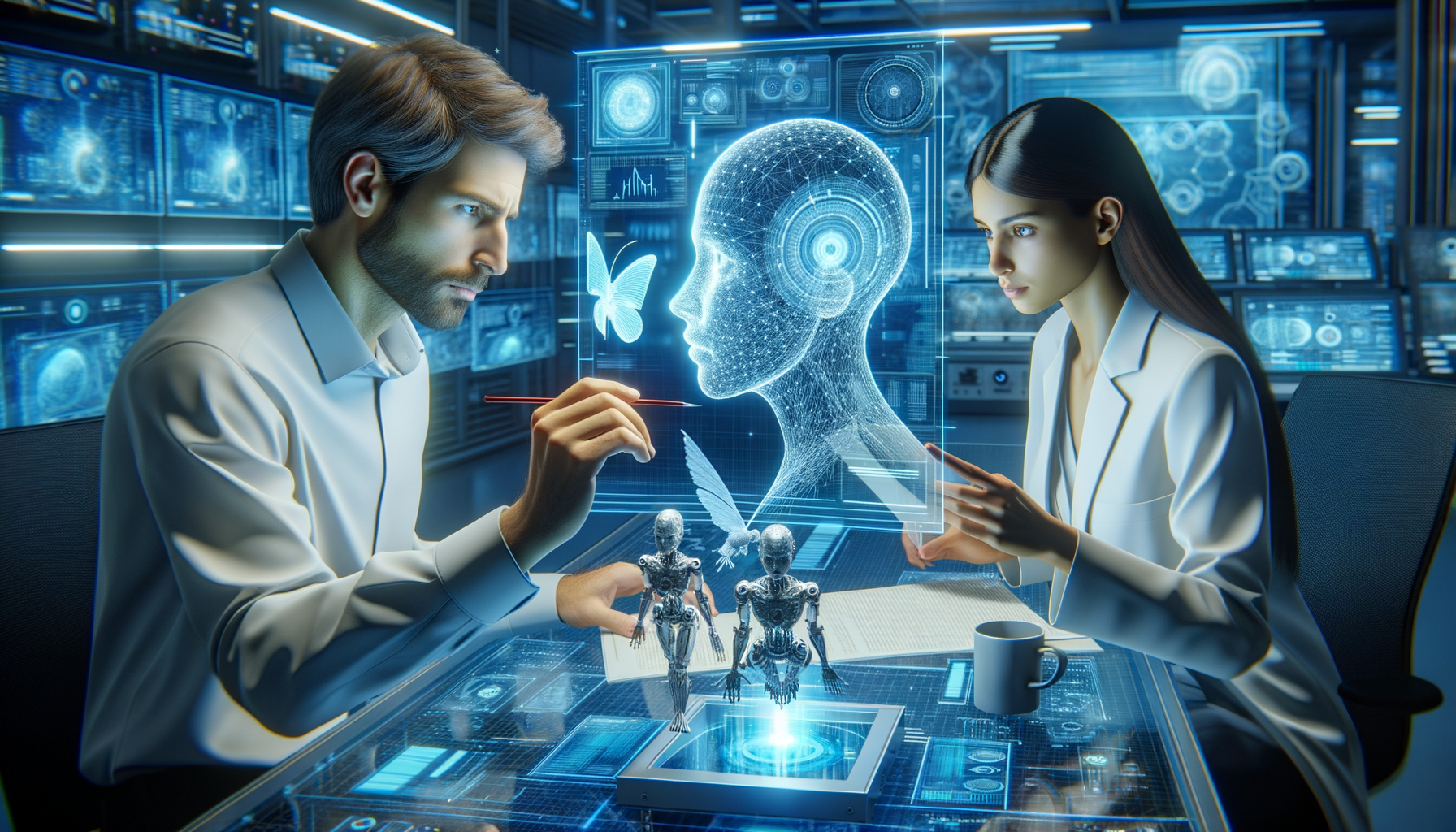
Stanfords and Meta’s Breakthrough AI System: CHOIS
In the ever-evolving world of artificial intelligence, a groundbreaking development has emerged from the collaborative efforts of researchers at Stanford University and Meta (formerly known as Facebook). The AI system, named CHOIS (Composable Human-Object Interaction Synthesis), is revolutionizing the way we create human-object interaction animations. This innovative technology holds immense potential for the fields of computer graphics, virtual reality (VR), and robotics.
Understanding CHOIS: The Future of Human-Object Interaction
CHOIS stands at the cutting edge of AI-driven animation, utilizing natural language commands and sparse waypoints to generate animations that are not just technically impressive but also strikingly realistic. This is achieved by training the AI system on a dataset of human interactions, allowing it to understand and predict how a person would naturally move in a given context when interacting with various objects.
The Impact of CHOIS on Multiple Industries
The applications of CHOIS are vast and varied. In the world of computer graphics, animators can leverage this technology to create more lifelike characters in less time, reducing the need for extensive keyframing and manual adjustments. This has significant implications for the film and gaming industries, where the demand for high-quality animations is always on the rise.
In the realm of virtual reality, CHOIS can be used to enhance user experiences by generating real-time, responsive animations that react naturally to user input. This makes for more immersive VR environments, whether for entertainment, training simulations, or educational purposes.
Robotics is another field that stands to gain from CHOIS. Robots equipped with this technology could better understand and execute tasks involving the manipulation of objects, paving the way for more adept service robots in the home or workplace.
How CHOIS Works
At its core, CHOIS functions by interpreting natural language instructions and then mapping those instructions onto a set of potential movements. For instance, if you tell the system to “pick up the cup,” it understands not just the action required but also the most natural way a human would perform that action. This is where sparse waypoints come into play—they guide the AI in creating a fluid motion path from start to finish, ensuring the resulting animation is both efficient and realistic.
CHOIS: A Tool for Creatives and Technologists
CHOIS is not just a technological marvel; it’s also a tool that can empower creatives and technologists alike. By simplifying the animation process, it allows artists to focus on storytelling and high-level design. For engineers and AI researchers, CHOIS serves as a platform for further innovation in the field of human-computer interaction.
Exploring CHOIS Further
For those interested in delving deeper into the capabilities of CHOIS, or perhaps even incorporating this technology into their own projects, resources and publications related to CHOIS are available. While there are no direct retail products tied to CHOIS as of yet, those looking to understand the principles behind it might consider reading up on AI, machine learning, and computer graphics through educational materials.
Books such as “Artificial Intelligence: A Guide for Thinking Humans” by Melanie Mitchell provide a solid foundation for those curious about the broader field of AI. You can find it on Amazon:
Artificial Intelligence: A Guide for Thinking Humans
For a deeper dive into the specifics of computer animation, “The Animator’s Survival Kit” by Richard Williams is a must-read, available here:
Conclusion
CHOIS represents a significant leap forward in the field of AI, with the potential to transform how we interact with and create digital content. Its ability to understand and execute natural language commands with sparse waypoints is a testament to the incredible progress being made in AI research. As CHOIS continues to develop, it will undoubtedly unlock new possibilities across various industries, from entertainment to robotics, making the future of human-object interactions more intuitive and immersive than ever before.
Stay tuned to the latest developments in AI and how they’re shaping our world by following tech blogs and news outlets. The journey of CHOIS is just one example of how artificial intelligence is not just a tool of convenience but a canvas for innovation and creativity.